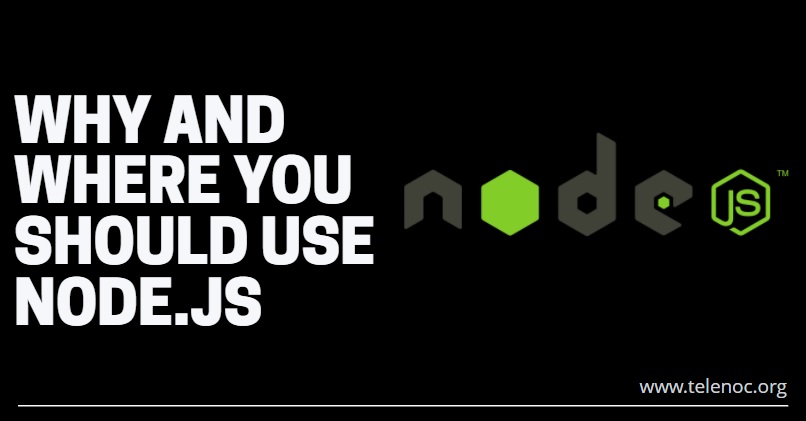Easy to learn
Node.js is truly simple to begin. The individuals who know JavaScript, realize how to compose Node.js applications. There are a few contrasts, notwithstanding, generally everything is something similar. The hardest thing about Node for fledglings is the offbeat non-obstructing programming worldview. Despite the fact that it’s still JS, when you get the thought, you’ll begin to look all starry eyed at it.
Hub’s principle advantage is that one JavaScript designer can deal with the entire web application rather than two engineers chipping away at the frontend and backend side. Moreover, frontend and backend applications can share the JS code. Code reusability makes application improvement costs less.
Dynamic open-source local area
I think the following cool component just after the non-impeding I/O activities (correspondence between the framework and the rest of the world) are open-source bundles from the NPM (Node bundles library). By the numbers, there are more than 1 million dynamic bundles as of now in the vault. A week ago downloads arrived at 14 billion and a month ago more than 61 billion! The numbers are gigantic.
I/O parkway
The center thing about Node is the Input/Output activities and how they are taken care of. I/O activities are for instance a data set call, getting record, calling an outside assistance, and so on In Node, we have the occasion circle which stores all approaching solicitations which are obstructing tasks tuned in with their callback capacities. Callback capacities are considered just in the wake of completing the obstructing activity. With this arrangement, Node isn’t hindering the principle string and can deal with new demands. Such component permits us to deal with more demands contrasted with strings arrangement from different dialects.
Adaptability
Hub permits you to scale simultaneous solicitations to beyond what different dialects can do out of the container. A few people accomplished versatility levels of more than 1 million simultaneous solicitations and more than 600,000 WebSocket associations. Obviously, it’s a matter of the work you do behind each solicitation and the number of assets you have, however Node is still acceptable at scaling things up.
Contrasted with Java, underneath some point characterized by the quantity of Java strings, Java is better in taking care of simultaneous solicitations, since strings are quicker. Despite the fact that Node, after that point is going higher in the quantity of simultaneous solicitations and Java stays with a similar greatest. Obviously, in the event that you compose terrible code, you’ll have 10 solicitations each second rather than 1000. As a rule, it’s simpler to compose versatile arrangements in Node.
Its cutoff points here are for the most part about CPU use because of the way that the entire application is running on a solitary string. You can’t completely utilize the CPU power. To scale things, you need to make a Node Cluster, use things, for example, PM2 hub measure supervisor or scale with Docker in the event that you run Node inside a Docker compartment.
Designer profitability and fulfillment
The newness of the innovation enables designers to make incredible programming. It’s ten years of age now. Conversely, Java or PHP showed up over 20 years prior, so it’s still lovely youthful. That and less standard code, simple nonconcurrent programming, and flexible JSON control satisfies Node.js designers while remaining gainful.
- Where would you be able to apply Node.js?
Hub will pretty much fit all over. At the point when you need to do a speedy least suitable item to test your thought or you need to go venture, use Node. There are a few provisos, be that as it may, the general picture of the Node environment is acceptable.
Programming interface
I can’t help thinking about why each blog entry about Node.js utilization doesn’t utter a word about basic API. Creators say that you can utilize it for modern cases, yet engineers can utilize Node just to make your CRUD application. With ORM support for SQL or NoSQL information bases, you can rapidly uncover your assets as an API. Consummately fits MVP use case. No advanced science with project arrangement. Simply compose the API and dispatch your item.
Ongoing applications
In Node, it’s excessively simple to incorporate with WebSockets like Socket.io. WebSockets, enable you to make a duplex association between the customer and the worker. With this, the worker can send constant updates to the client when something changes.
Model utilization of WebSockets:
- Social feeds — update immediately client takes care of with new posts without the need of reviving the client’s program
- Games — fire an activity occasion and broadcast it to different players
- Archive cooperation – report altering at the same time by various clients like Google Docs
- Clickstream information — dissect client developments and conduct on your site
- Constant examination and monetary tickers — update quickly your diagrams in the customer program
- Texting — live visit insight inside the customer program
- Serverless
On the off chance that you need to scale your application naturally that will identify traffic spikes and scale up or down to coordinate with approaching traffic, serverless is a decent alternative. It enables you to pay just for the assets utilized during the execution, so you don’t have to pay month to month for colossal examples that can deal with that traffic.
For example, Amazon Web Services has a thing called Lambda which is a capacity as-a-administration item, so you compose a JavaScript work that handles the solicitations, saves the code in the AWS, ties it to some endpoint with API Gateway and there’s nothing more to it. AWS will wrap up for you and you can rest soundly when a surge of clients visit the site on Black Friday, for instance.
There is one thing which I don’t care for about serverless design. It’s the seller lock-in issue, notwithstanding, in Node.js we have a system called serverless. It permits you to compose serverless applications that you can send to any cloud supplier with a reliable encounter and that is a lovely cool thing. It coordinates effectively with AWS, Azure, Cloudflare Workers, Fn, Google, Kubeless, OpenWhisk, Spotinst, so you can pick which supplier meets your requirements best.
High throughput APIs
The best instances of high throughput API are talk applications. You need to be solid and quick when a huge number of clients are composing messages to one another. Obviously, talks are not by any means the only model. You can utilize it wherever where you need to work at a tremendous scope. Legitimate level scaling, for example, application design on top of the AWS with Node.js I/O enables you to accomplish this objective. All things considered, it is anything but a sorcery innovation that will do it because of the case.
Web-based features
Envision you have a video document on your worker which weighs 20GB and your worker has just 8GB RAM. You need to give a connect to a companion to download it, so you just set up your worker and endpoint and you give the connect to your companion. Your companion taps the connection and from that point onward, your worker is going down due to out of memory mistake, on the grounds that the worker attempts to stack the entire document into the memory.
In Node you can deliver an out of memory blunder, be that as it may, Node Streams act the hero us. With Streams, by making record stream in our endpoint, we are simply expanding memory use by 25MB (default lump size), since Node isn’t buffering the entire document. It’s simply sending lumps, individually to the end-client. Additionally, you can change the stream on the fly. So for instance, in the event that you’d have a book document that would weigh 2GB, you could simply make a capitalized of all letters in each line on the fly without stacking the record into the memory. With those prospects, you can make your own Netflix clone or some other streaming stage.
Venture applications
Java is super venture. Many treat Node as a MVP instrument. In any case, as I would see it, that is the matter of utilized instruments. Many utilize the Express.js structure, which is versatile, useful for quick turn of events. Despite the fact that it’s utilized by numerous awkwardly and that prompts non-venture programming.
In any case, there is an answer. Nest.js is our Enterprise Hero. On the off chance that you know about Java Spring Framework, you’ll love it. Additionally, Nest.js utilizes TypeScript which gives it more Enterprise power. TypeScript is a superset of Javascript which has static sort checking which permits you to “compose Java with JSON”, so with TS you are more mistake verification. Home with its plan drives you to compose clean, venture code which makes your application more versatile in the matter of engineering and less blunder inclined, on the grounds that type mistakes are gotten even prior to running your application.
SQL and NoSQL
Many say that SQL support is more regrettable in Node. Two years prior I would say that Node.js should just be utilized with NoSQL information bases since working with NoSQL is a joy and with SQL isn’t. Nonetheless, these days SQL instruments are greatly improved. For instance, there is the Sequelize which is very acceptable when you need to make CRUD tasks and there is additionally Knex which can be utilized when you need to play out some high level inquiries. I like question manufacturers, nonetheless, Java inquiry developer called jOOQ is at the first spot on my list, sorry Node!
Node.js SQL devices are not more muddled, I mean here the grammar, than NoSQL devices. They are at a similar level, as I would see it. Along these lines, indeed, you can utilize Node.js with the SQL information base, no concerns.
Be that as it may…
As history shows, NPM had a few disappointments. One of them was about the 11 line Node bundle which was adding characters to the string — named “left-cushion.” On March 22nd, 2016 this bundle was erased from the store and it brought about world bedlam in the Node.js climate. Numerous tasks couldn’t be based on that day. Luckily, NPM fixed the issue by making it harder to unpublish a rendition of a bundle.
Something else about NPM weaknesses, on the sixth of January, David Gilbertson distributed an article “I’m collecting charge card numbers and passwords from your site. Here’s the ticket.” It shows how any programmer could infuse vindictive code in the bundle code and the bundle could be introduced not as your first gathering, but rather even as an outsider bundle. To be more exact, it’s a Node.js issue, yet it shows up likewise in practically any frontend tech.








